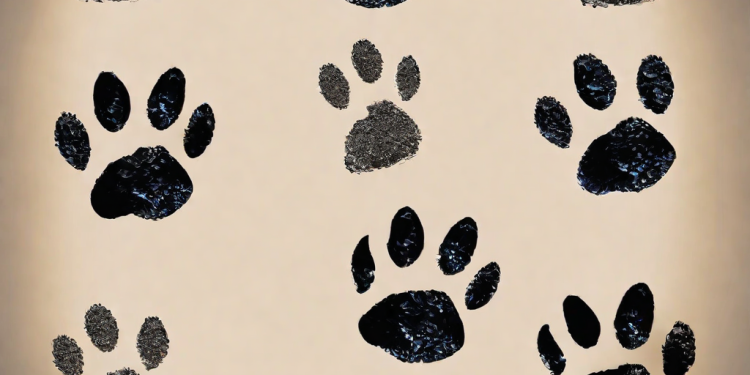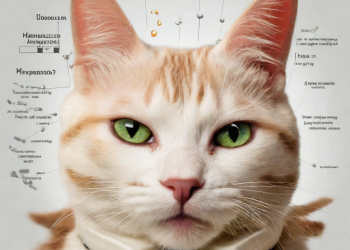Discover everything about the cat whistle, a traditional Spanish instrument that has been part of the country’s culture and history for centuries.
I researched its definition, origin, types, manufacturing, uses and its presence in Spanish culture and in other parts of the world. I also discovered curiosities and myths surrounding this instrument and reflected on its importance and controversies today. Read on to learn more about the fascinating world of cat whistle!
What is cat whistle?
The cat whistle is a traditional musical instrument from Latin America that is used in ceremonies and popular festivals.
Discover the history and cultural importance of the cat’s whistle
Learn about how this instrument has been used for generations to celebrate and preserve the cultural identity of different Latin American communities. Also, learn about the different types of cat whistles and how they are played. Don’t miss this fascinating musical tradition!
History of the cat whistle
The cat whistle has its origins in Spain, where it has been part of popular culture for centuries. Its evolution over time has been significant, going from being a simple hunting instrument to having cultural and social importance in society.
Origins in Spain
The cat whistle dates back to medieval times in Spain, where it was used as an instrument to call cats when hunting. Over time, its use spread to other activities, such as music and popular festivities.
Evolution over time
Over the years, the cat whistle has undergone changes in its design and function. What was once a simple whistle has now become an important cultural element in Spanish society.
Cultural and social importance
The cat whistle has transcended its original function and has become a symbol of Spanish culture. It is used in festivities such as Carnival and Holy Week, and its presence in art and music is notable.
Presence in other cultures
Although the cat whistle has its roots in Spain, its influence has spread to other cultures around the world. Its presence in music and popular traditions has made it an internationally recognized element.
Types of cat whistles
Cat whistles come in a variety of types, from traditional to modern, each with their own distinctive characteristics.
Traditional cat whistles
- Materials used: Traditional cat whistles are usually made of natural materials such as wood, cane or clay.
- Designs and shapes: These whistles usually have simple designs, often handmade, with shapes that evoke cats.
- Sounds produced: The sounds they produce are generally soft and melodic, imitating the meow of a cat.
Modern cat whistles
- Technological innovations: Modern cat whistles can include technologies such as pitch and volume adjustments, as well as recordings of real cat sounds.
- New materials: More modern materials such as plastic and metal are used to create cat whistles with more elaborate designs.
- Differences from traditional ones: These whistles can produce a wider range of sounds and have a more stylized appearance compared to traditional ones.
The diversity of types of cat whistles reflects the evolution of this instrument over time, as well as its adaptation to contemporary needs and tastes.
Making a cat whistle
The manufacturing process of a cat whistle can vary depending on whether it is done by hand or mass-produced. Both methods have their own characteristics and challenges.
Artisanal process
In the artisanal manufacture of a cat whistle, certain materials and specific manual skills are required. Some steps to follow include:
- Selection of natural materials such as cane, wood or clay
- Carving or molding of materials to shape the cat’s whistle
- Fine tuning to achieve the desired sound
Mass production
On the other hand, mass production of cat whistles involves the use of specialized machinery and tools. This method has its own advantages and disadvantages:
- Use of injection machines for plastic or metal molds
- Faster production
- Loss of authenticity and uniqueness of artisanal cat whistles
The impact on the cat whistle industry is evident, as mass production has led to greater availability of these instruments, but has also generated debates about their authenticity and cultural value.
Uses of cat whistle
The cat whistle has had a variety of uses throughout history, both in hunting and music, and has played an important role in popular culture.
on the hunt
The cat whistle has historically been used in hunting, especially in rural areas of Spain. Although its role in hunting has diminished today, it remains the subject of ethical debate.
- History of use in hunting: The cat whistle has been used for centuries as a tool to attract animals during hunting.
- Function today: Although its use has decreased, it is still used in certain traditional hunting practices.
- Debate about its ethical use: There is a debate about the use of cat whistle in hunting, with arguments for and against its use.
In the music
The cat whistle has also found its place in music, especially in certain musical genres and popular culture.
- Musical genres in which it is used: The cat whistle has been used in folk and traditional musical genres, as well as in some forms of popular music.
- Examples of songs with cat whistle: Some popular songs have incorporated the distinctive sound of the cat whistle into their music.
- Importance in popular culture: The cat whistle has contributed to the musical identity of certain regions and has been a distinctive element in popular culture.
The cat whistle in Spanish culture
The cat whistle, a traditional instrument with deep roots in Spanish culture, has played a significant role in various festivities, traditions and artistic expressions throughout history. His presence has remained alive in Spanish society, both in daily life and in the artistic and cultural sphere.
Festivities and traditions
- Carnival: During the Carnival celebrations in different regions of Spain, the sound of the cat’s whistle is a constant presence, adding a festive and joyful element to the festivities.
- Holy Week: In many Holy Week processions, the cat whistle has been used to create a solemn and emotional atmosphere, accompanying the steps of religious images.
- Popular festivals: In local and regional festivals, the cat whistle is a distinctive element that is part of the celebrations, providing a characteristic and traditional sound.
Representation in art
- Painting: Throughout the history of Spanish art, the cat’s whistle has been represented in paintings that capture scenes of daily life, festivities and popular traditions.
- Literature: In Spanish literature, the cat’s whistle has been mentioned in poems, stories and novels, reflecting its cultural importance and its deep-rooted presence in society.
- Film and television: In the entertainment industry, the cat whistle has been used as a distinctive sound element in films, television shows and theater productions that seek to capture the essence of Spanish culture.
The presence of the cat whistle in Spanish culture is a testament to its roots in society and its role as a symbol of tradition and artistic expression. Its influence endures today, keeping alive an important part of Spain’s cultural heritage.
Curiosities and myths about the cat’s whistle
The cat whistle, in addition to being a traditional instrument, is also surrounded by curiosities and myths that have endured over time.
Superstitions
- Hearing a cat whistle is considered an omen of good luck in some cultures.
- There are popular beliefs that attribute mystical and protective powers to cat whistle.
- Myths about cat whistle have their origins in ancient traditions and superstitions.
Interesting data
- World records have been recorded related to the production of cat’s whistle, demonstrating its relevance at a global level.
- There are historical curiosities about the use of the cat whistle in different times and cultures.
- Popular anecdotes related to the cat’s whistle are part of its rich history and tradition.
These curiosities and myths contribute to the fascination surrounding the cat’s whistle, enriching its cultural and social value.
The cat’s whistle today
The cat whistle continues to be a popular element in the daily lives of many people in Spain. Its presence can be observed in various events and celebrations, where it is used to add a traditional and festive touch. Furthermore, sales and production of cat whistles continue to be significant in the market.
- Use in everyday life: Although its use in hunting and music is known, the cat whistle is also used in everyday situations, such as in children’s games or as part of costumes during festivities.
- Presence in events and celebrations: The cat whistle is a common element in festivities such as Carnival, Holy Week and other popular celebrations, where its distinctive sound is part of the tradition.
- Sales and production: Despite technological advances, the demand for traditional cat whistles remains high, which maintains their production and sale in the market.
Influence in other countries
The popularity of the Spanish cat whistle has transcended borders, with exports to other countries and adaptations to different cultures. Its reception abroad has been varied, but it has managed to capture the attention of people interested in Spanish culture and its traditions.
- Export of Spanish cat whistles: Some companies have dedicated themselves to exporting cat whistles to other countries, where they are appreciated as cultural curiosities or souvenirs.
- Adaptation to other cultures: In some cases, the cat whistle has been adopted by other cultures, which have integrated it into their own traditions or used it as inspiration for the creation of new instruments.
- Reception abroad: Reception of the cat whistle abroad has been mixed, with some showing genuine interest in its history and meaning, while others perceiving it as an exotic object of no further relevance.
Controversies and debates about cat whistle
The cat’s whistle has been the subject of controversy and debate in different areas, especially with regard to its use in hunting and the protection of its cultural heritage.
Use in hunting
The use of cat whistle in hunting has generated arguments for and against it, especially regarding its impact on species conservation. Some defend its use as a tradition rooted in Spanish culture, while others argue that its use can have negative effects on wildlife.
- Arguments for and against the use of the cat whistle in hunting.
- Regulations and laws that affect its use in hunting activities.
- Impact of the cat’s whistle on species conservation.
Protection of cultural heritage
The preservation of the cat’s whistle as part of Spanish cultural heritage has raised concerns about possible threats to its tradition. Experts and defenders of the traditional instrument have advocated for protective measures to guarantee its continuity over time.
- Threats to the cat whistle tradition.
- Proposed protection measures to safeguard its cultural heritage.
- Expert opinions on the importance of preserving cat whistle.
Conclusions
In summary, the cat whistle is a traditional instrument with a long history in Spanish culture. Over the centuries, it has evolved and adapted to different uses and contexts, from hunting to music and popular festivities. Its presence in daily life and in cultural events demonstrates its continued importance in Spanish society.
Reflecting on the importance of the cat whistle, it is evident that this instrument is not only an integral part of Spanish culture, but has also left a mark on other cultures over time. Its presence in music, art and popular traditions demonstrates its lasting influence.
As for prospects for the future, it is crucial to continue valuing and preserving the cat’s whistle as part of Spain’s cultural heritage. Despite the controversies and debates surrounding its use, it is essential to recognize its cultural significance and promote its continuity in future generations.
Finally, this invitation to continue discovering and valuing the cat’s whistle is a call to appreciate and keep alive this unique tradition. As the world moves forward, it is important to remember cultural roots and preserve traditions that have enriched society over the years.











